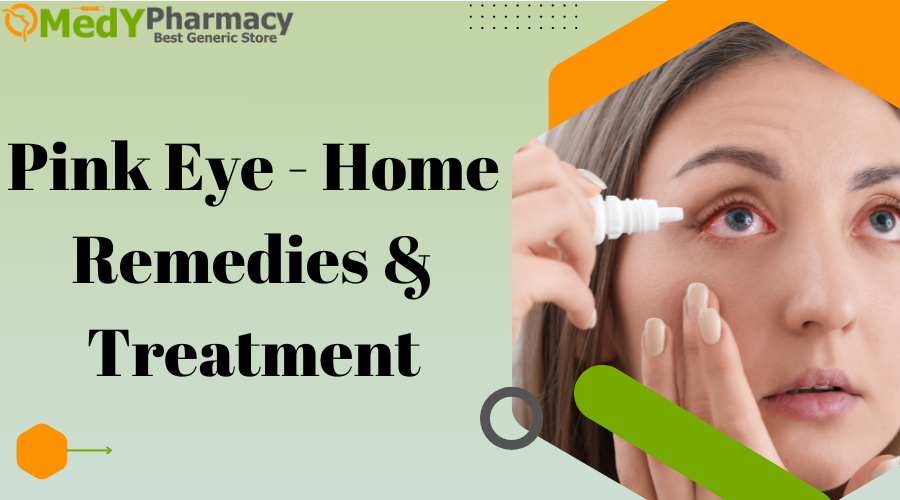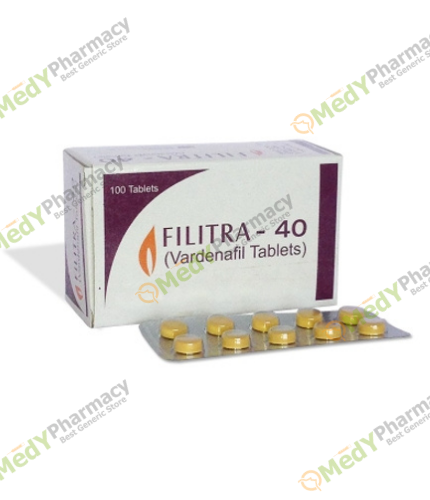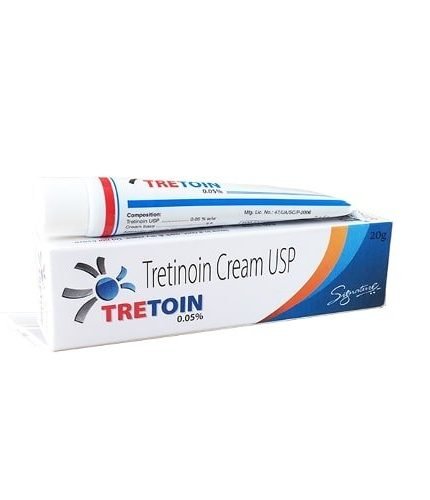Introduction:
Only a few diseases have medical terminology that is more widely known than their colloquial ones. One such example is your pink eye. Are you wondering what it is? You typically refer to it by the medical word, conjunctivitis. Listening to them, you will be able to connect with them quickly. You’ve been through it at least once, so you know how bitter you are about it.
Conjunctivitis, often known as pink eye, is a disorder that causes your eyes to become red, itchy, and generally painful. Allergies, germs, or viruses can cause pink eye and can remain for up to two weeks.
Artificial tears, over-the-counter pain relievers, and allergy drugs are some self-care options for conjunctivitis. If you want to know how to treat pink eye, how to prevent it, and when to consult a doctor, keep reading.
What Is Pink Eye?
Pink eye, also known as conjunctivitis, occurs when the inside of your eyelid and the white area of your eye swell and turn red. The three most common causes of pink eye are viruses, bacteria, and allergies.
- Burning or itching
- Pink or Red
- Swollen
- Watery
You may get mucus-like discharge from your eye. Can occasionally result in blurred vision or light sensitivity. Symptoms are normally moderate but can worsen and necessitate a visit to a healthcare provider.
Can be both annoying and painful. Certain illnesses can worsen without therapy. Several effective home treatments for eye infections can help relieve symptoms.
Commonly known as conjunctivitis. It is an eye ailment that results in inflammation or infection of the eyeball’s outer membrane and inner eyelid. It is very contagious and spreads when someone comes into contact with an infected person’s eye fluids.
Types of Pink Eye
Before we look at the many home remedies for pink eye, it’s crucial to understand the various types of conjunctivitis. This is mostly because not all forms of conjunctivitis can be treated at home. Understanding which type you have will give you the best chance of overcoming the problem.
- Allergic Pink Eye
Allergic conjunctivitis is a frequent but not contagious type of pink eye. Allergens such as pollen, dust mites, and animal dander are common causes of this form of conjunctivitis. The symptoms of allergic conjunctivitis include redness and itching in the eyes.
Depending on the trigger allergens, the illness may be present all year or only during certain seasons. Avoiding trigger allergens is the most efficient way to avoid this type of pink eye.
- Bacterial Pink Eye
Bacterial conjunctivitis, unlike earlier types, is very contagious. Bacterial conjunctivitis causes a thick white, green, or yellow discharge from the eye. While the problem will most likely correct itself in a week or two, antibiotic eye drops can help relieve any discomfort.
- Viral Pink Eye
This is the common name for viral conjunctivitis. It is caused by an adenovirus and is very contagious. It can arise on its own or in conjunction with upper respiratory diseases such as a cold or the flu. The symptoms can be treated with medicated pink eye drops, but they will most likely go away on their own.
- Chemical conjunctivitis
- Neonatal conjunctivitis
- Giant papillary conjunctivitis
When to Call a Healthcare Provider
If you have any of the following pink eye symptoms, it is important to see a healthcare provider:
- Eye discomfort
- Red eyes
- Light sensitivity or impaired vision that does not improve when released from the eyes
- Pink eye symptoms that either do not improve or worsen with treatment
If you have a weakened immune system or eyesight, you should see a doctor. Pink eye in newborns requires quick medical treatment.
How to Prevent Pink Eye
The methods for preventing the spread of pink eye differ based on the type. However, one basic preventative advice is to wash your hands with soap and water or use alcohol-based hand sanitizer.
Another strategy to avoid pink eye is not to share personal goods such as pillowcases, linens, and makeup. This is useful when you have or don’t have pink eye.
It is also beneficial to clean glasses and eyeglass cases. You should also discard any eye-care products used during a pink eye infection to aid in prevention.
- Brushes or sponges
- Contact lens solution
- Contacts and cases
- Makeup for the eye and face
Diagnosis
In most circumstances, your healthcare practitioner can diagnose pink eye by inquiring about your recent health history and symptoms, as well as checking your eyes.
Rarely, your provider may collect a sample of the liquid that drains from your eye for laboratory testing, known as a culture. If your symptoms are severe and your provider determines a high-risk explanation, such as:
- You have a strange body in your eye.
- A severe bacterial illness.
- An infection is transmitted through sexual intercourse.
Natural Remedies
Natural remedies may help avoid viral conjunctivitis. Eating probiotics and a diet high in vitamins A, K, C, and B can assist enhance eye health and prevent infection.
If you have conjunctivitis and it is not a bacterial illness, consider these methods to relieve your symptoms.
- Please wash all of your sheets.
- Take a zinc supplement.
- Use cold compresses on your eyes.
- Regularly flush your eyes with clean water.
- Get a lot of sleep.
- Hydrate properly to aid in your recovery.
How to Get Rid of Pink Eye Quickly
In most circumstances, you should wait a few days to observe if the pink eye clears on its own. If you are in pain or discomfort, you may want to contact a doctor. You should also seek medical attention if the symptoms persist or if you have any other symptoms.
Seeing a doctor can help minimize the length of conjunctivitis. Essentially, the doctor will prescribe eye drops that are appropriate for the individual disease. If you do not want to see a doctor for conjunctivitis, various home treatments can produce similar results.
Home remedies for viral and allergic conjunctivitis
Allergic and viral conjunctivitis are the most straightforward to cure at home. While you should contact a doctor if the disease persists, there are some things you can do to alleviate the symptoms and help the eye recover faster.
Many of these home treatments are anecdotal. While many people have reported feeling better after utilizing these approaches, you can consult a professional if you’re unsure how they’ll impact you or interact with other therapies.
Pink Eye: Symptoms and Experience
It is not pink, but it is red – yep, the effect causes your eyes to turn red, and you can have it in both or one eye. However, those who have encountered it in life are well aware that they are so contagious that they are frequently found in both eyes, even though it was initially an experience in one eye only.
The primary symptom is irritation, followed by tears and tear gland extracts. Bacterial infections or viruses cause swelling in your tissues. In rare situations, it may be caused by the usage of certain chemicals or allergies.
Of course, you must use Bimat Eye Drop to treat the condition, but you should also explore other home remedies to alleviate the irritation.
Home Remedies for Pink Eye
The first step is to keep your contact lenses out of your eyes. When you have conjunctivitis exclusively from wearing contact lenses, you should use Careprost Eye Drop (With Brush).
As a result, the lens should ideally be avoided during this time. They have the potential to transmit the virus, exacerbating your problems.
The second cure is to place artificial tears in your eyes. Bimat Eye Drop (With Brush) is the best of the bunch, but make sure to open a new file for your affected eyes, as the previous one may have some bacteria adhering to the tip, spreading the illness in you.
Thus, for Pink Eye, utilize a fresh teardrop file. They work effectively because they add more oxygen to your eyes. They supply oxygen to your ocular nerves, making infection-fighting considerably easier.
Wash your eyes with plain water a few times a day. Try to repeat every 30 minutes. This will remove any tears that may have formed in the meantime. The infection’s tears carry the bacteria, which spread to your eyes, making the situation even worse.
As a result, rinsing it off with simple water is the greatest option and the ideal cure for your Pink Eye.
You can also apply a cold water-soaked towel to the affected eye. Put it with your eyelids closed. This will alleviate the irritating sensation in your eyes. Cold water may not be effective in some cases. He can also use a hot water-soaked handkerchief.
However, the water should not be too hot, as this can harm your eyes. Furthermore, do not push the cloth against your eyelids. Simply place them over your eyes as you normally would. Repeat the process five times per day for the best results.
Finally, protect your eyes from further external infections. Bacteria and viruses are very sociable. As a result, when they stay somewhere, they gather all of their buddies in one location, making your experience even more unpleasant. Do not allow this to occur.
Put on some sunglasses and try to protect your eyes from external contact. This prevents conjunctivitis from spreading.
Should I Consult My Doctor Regarding Pink Eye?
Can occasionally necessitate a visit to the doctor. It is dependent on the type of pink eye you have and how severe it is. See your ophthalmologist immediately if:
- You are in pain or having difficulty seeing.
- You develop sensitivity to light
- Your symptoms have lasted a week or longer, or are worsening.
- Your eye produces a lot of pus or mucus.
- You experience other signs of an illness, such as fever or achiness.
This is a major cause of school absenteeism, and it can spread swiftly in schools. Make sure your children understand how to avoid getting pink eye and other diseases.
Self-care for Pink Eye
Whatever the cause of your pink eye, there are some simple things you may take to feel better.
- Apply a compress
Soak a lint-free cloth in cold water. Wring it out and gently touch your closed eyes. Don’t press too hard because you don’t want to harm your eyes. If you just have pink eye in one eye, keep the compress away from the good eye, as it may also become infected. If it’s more comfortable, use warm water. However, don’t overheat it, as this can aggravate your pink eye or burn your eyelids. Compress for a few minutes at a time, multiple times each day. Make sure no one else is using the fabric.
- Apply Eye Drops
Itching relief can be obtained with over-the-counter drops. Check for “lubricating” droplets or “artificial tears.” Stay clear from those that cure “red eyes.” Putting your drops in the fridge may help them feel even better.
- Do not use your contacts
If you wear contact lenses, you should remove them until your pink eye clears. You may need to replace your lenses and case thereafter. Bacteria or viruses may live there, and you may become infected again.
- Stop wearing eye makeup
Wearing eye makeup when you have pink eye is not encouraged. It may not have been the root of your infection, but wearing eye makeup can help spread it to the healthy eye. Discard and replace any eye makeup or applicators you used before for your infection.
- Eye drops
People can use artificial tears to relieve eye discomfort or burning. Artificial tears are a form of eye drops available over the counter.
Careprost Eye drops can help clean the eye and remove residues of the allergen, making them especially useful when a person has pink eye caused by allergies.
- Do Not Touch Your Eyes
Certain kinds of pink eye, such as bacterial or viral pink eye, are very infectious. Touching the eye can cause the infection to spread to the opposite eye or other people. It could also worsen the symptoms.
If a person needs to touch their eyes, for example, to clean them, they should thoroughly wash their hands before and after. It is critical not to reuse tissues, washcloths, or towels that have come into contact with the affected eye. Until the symptoms have passed, a person should avoid wearing contact lenses or eye makeup.
Special Care Must Be Taken For Pink Eye
If you have conjunctivitis in one of your eyes but not both, there is a good possibility that both of your eyes may develop the condition soon due to the virus’s rapid spread. As a result, it is best to treat both eyes separately. Separate the towel that you are using for both eyes, as well as the handkerchief.
If you use a damp cloth to cover the affected eye, be sure it does not come into contact with the other eye. If it touches, the second eye will be impacted quickly, and you will be powerless to stop it.
While washing your damaged eye with running water, be sure the water does not get into the other eye. There is a good chance you will make it, and if you do, the second eye will become infected overnight.
You will have intense itching in the affected eye. Try not to scratch it, as this will spread the virus. However, if you do come into contact with it, wash your hands right away. If you touch the non-infected eye with that hand, it will quickly turn pink.
Pink Eye Treatments to Avoid
If you want to get rid of pink eye, you are probably willing to do anything. But, before you worry, you should be aware that certain web sources promoting specific home treatments can potentially be harmful.
Furthermore, they have not been scientifically demonstrated to be effective in treating conjunctivitis. In some situations, you may get a worsening infection.
Overall, Rice advises against putting anything in your eyes unless you’ve spoken with a healthcare expert first. That applies to pink eye as well as other eye-related conditions.
How to cure Pink Eye
In some cases of pink eye, you can utilize home treatments to alleviate symptoms while the infection resolves.
- To minimize irritation in your eyes, apply cold compresses.
- Apply fake tears to your eyes.
- Wash your hands before coming into touch with your eyes.
- To avoid reinjecting your eyes, thoroughly wash all of your bedding.
- Wearing contact lenses is not recommended until the infection has disappeared.
If home treatment does not cure your symptoms, you should consult an eye doctor. They may prescribe antibiotics for bacterial pink eye.
Conjunctivitis Preventative Measures
Maintaining proper eye hygiene lowers the likelihood of acquiring pink eye. Here are a few practical techniques you may apply to reduce the risk of having conjunctivitis:
- Contact lenses and cases should be cleaned regularly.
- Avoid excessive touching or rubbing of the eyes.
- Check the use-by dates of all facial goods, including makeup.
- When grooming, always use different towels.
- When working with chemicals, use sufficient eye protection.
When Should You See a Doctor About Conjunctivitis?
As previously stated, the majority of cases of pink eye resolve themselves. However, some situations will undoubtedly benefit from medical intervention.
- You have had previous eye infections or diseases.
- You are immune-suppressed.
- You are a child.
In general, if the pink eye persists after about a week, you should see a doctor. In addition, if you develop any of the symptoms listed below while suffering from conjunctivitis, you should seek expert help.
- Fever
- Eyes are painful
- Visual impairment
- Light sensitivities
- Green or yellow eye discharge
The Attention You Should Give
Make sure you don’t miss the (Bimatoprost).
The artificial tear will wash away the bacteria-infected tears, helping to rid the eye of the bacterium’s effects.
As a result, missing the drops means you are preventing the viruses from spreading and prolonging your pain.
As a result, never miss a drop and apply it three to four times per day.
It will take 3-4 days to remedy the issue. If the problem persists, or if you notice Pink Eye after the cure and you have itching again, you should consult a doctor.
Pink Eye Prevention
If the pink eye has entered your home, take precautions to prevent it from spreading to others. The two most crucial things that everyone in your family should remember are:
- You should wash your hands frequently.
- Try not to touch your eyes.
Towels and pillowcases should also be changed regularly and washed in hot water. Never share towels or pillows with anybody who has pink eye.
Last Words:
In general, Careprost Plus Eye Drop can readily fix the problem in you when combined with other homemade remedies. However, the irritation does not always go gone quickly. Either the infection you had in your eyes at the time was more severe, or there were additional complications that caused you to acquire Pink Eye.
You can get the drops from any local retailer. It is, however, also available from internet merchants such as Medypharmacy Pharmacy.























